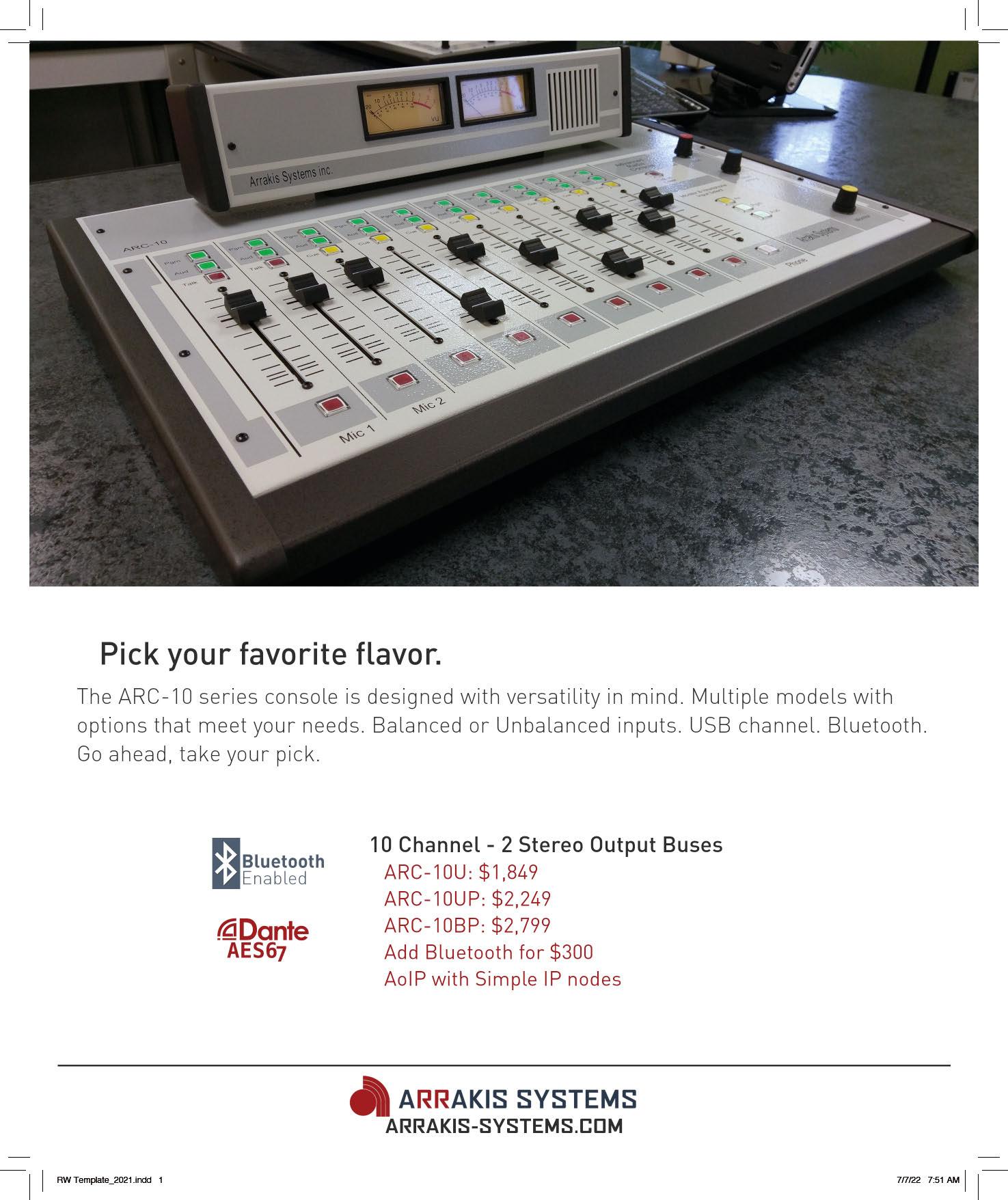
2 minute read
Xperi cautions against one-stop approach to receivers
Writer
Susan Ashworth
Longtime RW contributor and the former editor of TV Technology magazine.
Pobytov/Getty Images
Xperi cautions against onestop approach to receivers
T
he developer of HD Radio has something to say when it comes to the performance of receivers and efficient uses of wireless spectrum — namely, that the Federal Communications Commission should avoid a one-size-fitsall approach.
Xperi also would like the FCC to adopt a minimum product requirement that includes digital radio capabilities for car and portable AM/FM radio products.
The commission had invited comments in a notice of inquiry about promoting efficient use of spectrum through improved receiver interference immunity.
Xperi wrote that in the 20-plus years it has been working on digital radio, it gained significant expertise in terms of how system design can result in effective use of spectrum.
It said it wholeheartedly agrees that improvements in receiver performance will help make spectrum management more efficient. But any effort must preserve existing spectrum and protect current users. Also, “[A]ny approach to improving receiver performance must begin with a recognition that not all technologies operate in the same way and different spectrum bands experience different interference concerns.”
Xperi noted that the NOI “does not once mention” the impact of noise from unintentional radiators, which has a significant effect in raising the noise floor. It pressed the FCC to consider the ongoing impact of such radiators.
It said wireless power transfer systems that have been proposed to charge electric vehicles use switching frequencies that generate harmonics in the lower AM band. As carmakers design more efficient ways to transmit power, “the seemingly inexorable increase in AM-band noise floors can be expected to continue.” Meanwhile, new technologies in products like LED lights will degrade reception in FM.
“With increasing noise and interference in the AM/FM bands, the digital IBOC modulation used in the HD Radio system provides a significant level of noise immunity,” the company said.
“As more radio stations convert to digital operations, a minimum product requirement including digital radio capabilities for car and portable AM/FM radio products will ensure continued efficient use of the AM/FM band and the services they provide.”
It also said that the lessons Xperi learned in developing its digital technologies could be useful to the FCC, including aspects like signal enhancements, noise and interference reduction, sensitivity and selectivity, receiver clock accuracy, antenna system design, shielding, cable routing, filtering and component placement.
But it emphasized that despite the general applicability of these principles, “it would be a mistake to assume that the practices that have worked for digital radio would necessarily work for other applications.”
Xperi said the FCC should adopt an industry-specific approach to receiver performance. What works for aviation equipment — the focus of many comments to the commission’s NOI — may not work for broadcast or 5G, so the commission should establish guideposts for each industry with individual performance metrics and test programs.
Industry-led guidelines are the best way to assess receiver performance, it said, and Xperi pointed to the rollout of the IBOC radio standard and HD Radio technology as examples of how an “industry-based approach” produced helpful lessons about receiver performance and use of spectrum.
Comments from entities like Collins Aerospace, the CTIA, AT&T and others are part of ET Docket Number 22-137.







